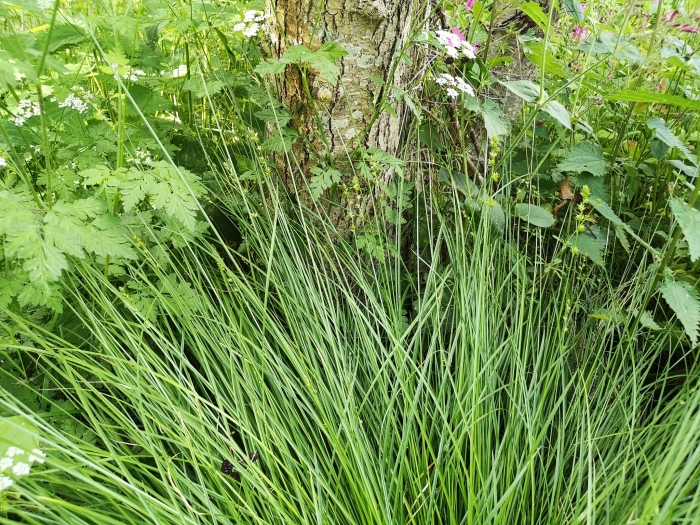Grassland Sedge
(Carex leersii)
Grassland Sedge (Carex leersii)
/
/

© Jens-Christian Svenning
CC BY 4.0
Image By:
© Jens-Christian Svenning
Recorded By:
Copyright:
CC BY 4.0
Copyright Notice:
Photo by: © Jens-Christian Svenning | License Type: CC BY 4.0 | License URL: http://creativecommons.org/licenses/by/4.0/ | Uploader: jcsvenning | Publisher: iNaturalist |

























Estimated Native Range
Summary
Carex leersii, commonly known as Grassland Sedge or Many-leaved Sedge, is a perennial herbaceous plant that thrives in a variety of habitats including grasslands, meadows, and open woodlands. It is native to a broad region encompassing the Atlas Mountains, Europe, the Middle East, Central Asia, the Altai, and the western Himalayas. This sedge typically forms dense clumps and reaches a height of 20-60 cm. It has narrow, grass-like leaves and produces inconspicuous greenish-brown flowers in the late spring to early summer. The plant’s foliage remains attractive throughout the growing season.
Grassland Sedge is valued for its adaptability to different soil types and its ability to thrive in both moist and relatively dry conditions, making it suitable for a range of garden settings. It is often used in naturalistic plantings, as ground cover, and for erosion control due to its dense root system. In cultivation, it prefers full sun to part shade and can tolerate a range of soil conditions, although it does best in well-drained soils. While generally low-maintenance, it can become invasive if conditions are ideal, spreading through its rhizomes to form extensive colonies.CC BY-SA 4.0
Grassland Sedge is valued for its adaptability to different soil types and its ability to thrive in both moist and relatively dry conditions, making it suitable for a range of garden settings. It is often used in naturalistic plantings, as ground cover, and for erosion control due to its dense root system. In cultivation, it prefers full sun to part shade and can tolerate a range of soil conditions, although it does best in well-drained soils. While generally low-maintenance, it can become invasive if conditions are ideal, spreading through its rhizomes to form extensive colonies.CC BY-SA 4.0
Plant Description
- Plant Type: Grass
- Height: 0.5-1 feet
- Width: 1.25-1.5 feet
- Growth Rate: Moderate
- Flower Color: N/A
- Flowering Season: Summer
- Leaf Retention: Evergreen
Growth Requirements
- Sun: Full Sun, Part Shade
- Water: Medium
- Drainage: Medium
Common Uses
Erosion Control, Low Maintenance, Water Garden
Natural Habitat
Native to grasslands, meadows, and open woodlands
Other Names
Common Names: Smooth Black Sedge
Scientific Names: , Carex leersii, ? leersii, Carex canescens, Carex chabertii, Carex contigua subsp. leersii, Carex cuprina, Carex cuprina, Carex divulsa subsp. chabertii, Carex divulsa subsp. chabertii
GBIF Accepted Name: